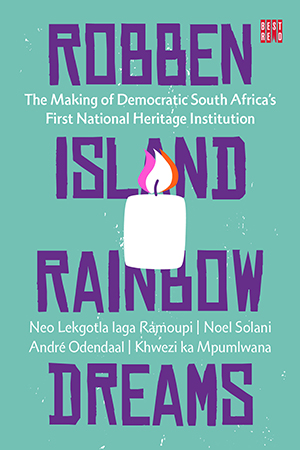
- 2021/415 pages
- Distributed for Best Red, an imprint of HSRC Press
Robben Island Rainbow Dreams:
The Making of Democratic South Africa's First National Heritage Institution
Paperback: $45.00
ISBN: 978-1-928246-29-9
Ebook: $45.00
ISBN: 978-1-928246-54-1
Following the birth of democracy in South Africa in 1994, Robben Island, once a symbol of pain, injustice, and closed spaces, became a UNESCO World Heritage Site and a global symbol of the commitment to democracy, tolerance, and human dignity. In the years that followed, however, conflict marred the high hopes for this cherished location. Robben Island Rainbow Dreams offers a behind-the-scenes account of the creation of the Robben Island Museum and the debate over democratic South Africa's first national heritage institution.







